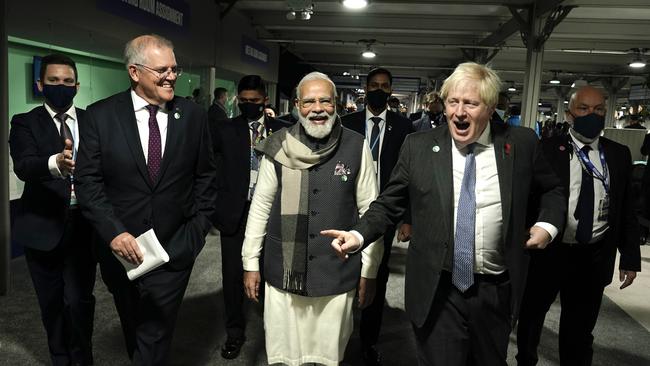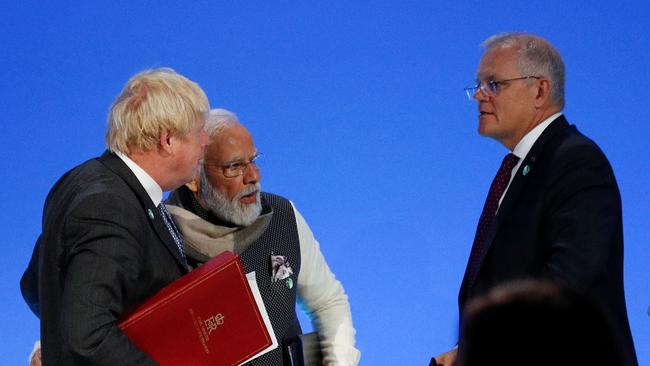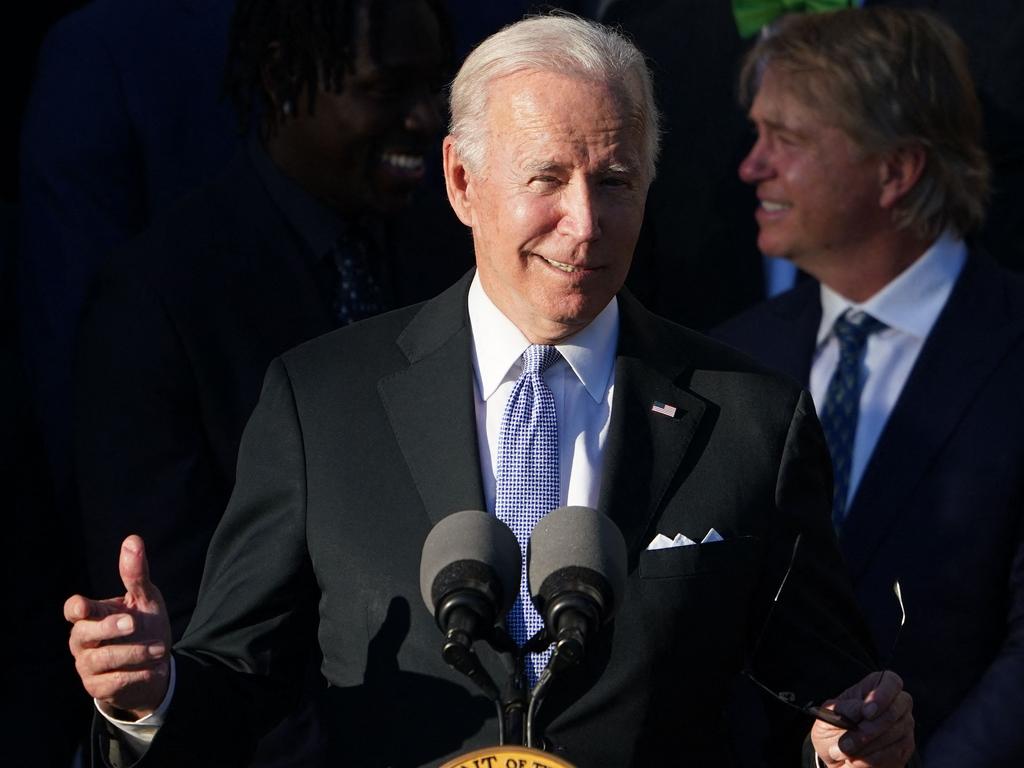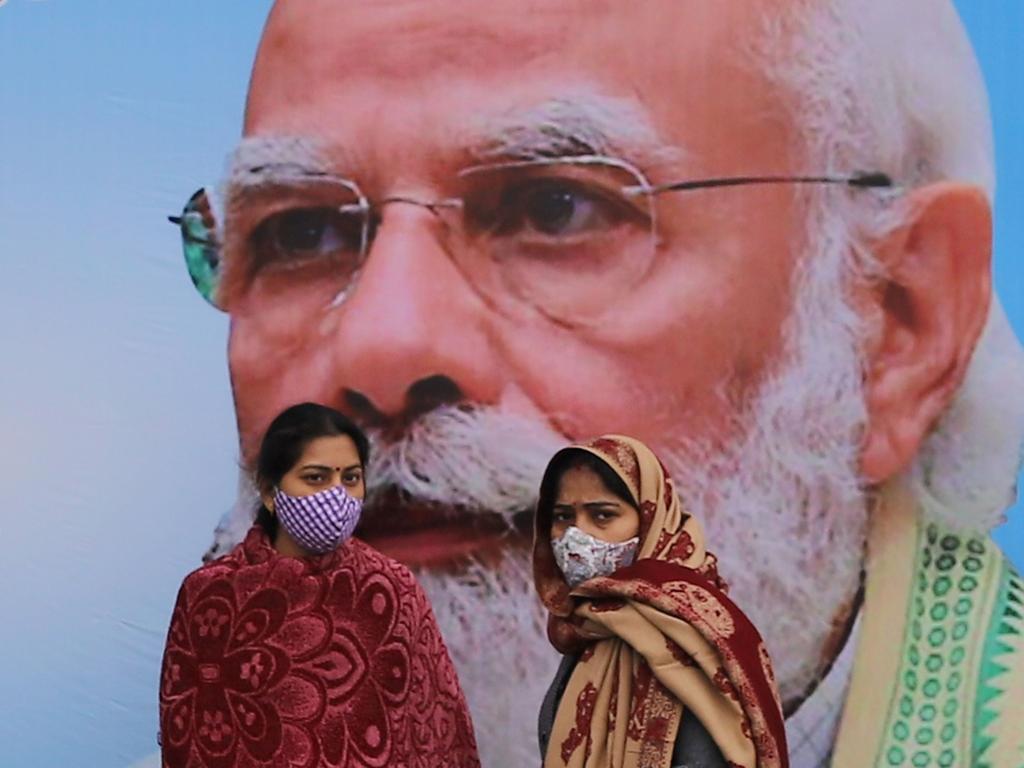Modi operandi: why India is vital to our regional strategy
As Australia’s relationship with China has soured, probably irretrievably, India has emerged as the great new hope across the political spectrum. But there are choppy waters ahead.

In the stifling mid-afternoon heat near the remote town of Pokhran, in the Rajasthani desert, on May 11, 1998, India detonated one fusion-based and two fission-based nuclear warheads. Two days later, it detonated two more fission-based warheads.
The then prime minister, Atal Bihari Vajpayee, announced India’s arrival as a nuclear power. It had planned and executed the tests, he said, to gather data for computer simulations, which would allow India to develop its nuclear capacities without the need for further tests. And it had taken the world by surprise: despite intensive US monitoring of the site, no one outside a small coterie of Indian officials had any idea of the scale, sophistication or imminence of the tests.
Australia’s response was swift and damning. Then minister for foreign affairs Alexander Downer called the tests “outrageous acts” and prime minister John Howard referred to them as a “grotesque status symbol”.
Canberra suspended ministerial contacts, defence co-operation and non-humanitarian aid to New Delhi. While other nations also condemned India’s tests, and Australia took even harsher measures against Pakistan when it carried out its own nuclear tests a fortnight later, New Delhi took particular exception to Australia’s reaction. It enacted retaliatory measures and heaped derision on Australia’s hypocrisy. Only a country entirely dependent on another’s nuclear umbrella for its own defence could act holier-than-thou towards a country in a tough neighbourhood needing to look to its own means, argued Indian diplomats. The sniping continued in the following months.
The 1998 Pokhran tests represent the nadir of Australia’s relationship with India. Both sides drew on decades of misunderstandings and irritations. For Australian officials, the tests showcased India’s tendency to buck international consensus and to hide self-interest behind condescending moral principle. For Indians, Australia’s hectoring arose from a privileged, white, probably racist attitude, talking down to others while cowering under America’s strategic skirts.
But Pokhran also marked a turning point in Australia–India relations. Two years later, Howard visited India, the first Australian prime minister to have done so since 1989. The Indian defence secretary visited Australia the same year, inaugurating a dialogue that has deepened ever since. Bilateral trade began to expand quickly, leaping from $3bn in 2000 to more than $20bn a decade later. No longer is it the case that, as foreign policy specialist Allan Gyngell once quipped, “every Australian government discovers India once, and then promptly forgets about it”. India has emerged as a bipartisan foreign policy priority for Australia. India, as well, has begun to take its relations with Australia seriously.
Measures of mutual regard and collaboration have continued to proliferate. In June last year, prime ministers Scott Morrison and Narendra Modi signed a Comprehensive Strategic Partnership. The partnership sets out an ambitious agenda of collaboration on science, technology, defence, counter-terrorism, regional diplomacy, innovation, agriculture, water, governance, education, tourism and culture. Talks on a free-trade agreement inch forward, and each nation has produced a strategy for increasing economic engagement with the other. They are enthusiastic participants in the Quadrilateral Security Dialogue (the Quad), which includes Japan and the US.

As Australia’s relationship with China has soured, probably irretrievably, India has emerged as the great new hope across the political spectrum and through diverse sectors of the economy and society. In seeking to diversify away from one big developing market, businesses have begun to focus on the only other with a scale and dynamism that comes close to China’s. And as Australia views China in increasingly threatening terms, it finds ever more reasons to seek common cause with a fellow democracy – a significant and growing military power with its own conflictual relationship with Beijing.
With America’s lurch towards Trumpism leading to nervousness about US power and commitment, even to close allies – a fear that persists with Joe Biden in the White House – will India emerge as a new “great and powerful friend” for Australia?
That phrase, coined by Menzies, has become a leitmotif in Australian foreign policy because it describes an essential truth: Australia relies on special relationships with great powers for its security.
As Menzies put it pithily in a speech before the 1958 election, “The dominant element in our foreign policy is, of course, to maintain friendly relations; to be good neighbours; to have powerful friends. Why powerful friends? Does anybody suppose we could in our own strength defend ourselves against a major aggressor?”
Australia, it seems, has started to envisage a substantial role for India in its strategic future. But it is not clear exactly what this role will look like. Nor is it clear that India is prepared to play the function Australia may want it to.
As China becomes more assertive, Canberra must think hard about how India may or may not complement its other important relationships in ensuring a favourable regional order in the decades ahead. This will involve thinking about Australia’s needs, as well as pondering how great, how powerful and how friendly India will be.
Australia brings two major assets to building its relationship with India. One is its close relationship with the US – an irony given that this intimacy once made Indians dismissive of Australia’s foreign policy independence. Now, however, India sees Australia as an anchor that grounds the stabilising ship of the US in Indo-Pacific waters. While India would never contemplate allowing US destroyers regular access to its naval bases, it is comfortable with Australian bases providing support to US fleets.
The other asset is the Australian navy, the second-most powerful of any Indian Ocean littoral state. That Australia accepts a legitimate role for the Indian navy in the Indian Ocean makes it easier for other significant littoral states, such as Indonesia and Malaysia, to accept it also.
The rapid souring of Australia’s relationship with China has added further momentum to Indo–Australian ties. A more antagonistic China makes India a more compelling partner. And no Indo-Pacific capital would have been more gratified than New Delhi at Canberra’s newly confrontational attitude towards Beijing. Australia, the US and Japan are now aligned with India’s sense of Indo-Pacific power relations, as shown by consequential meetings of the Quad and the regularity with which the naval forces of the four countries train with one another.

The prevailing view in Australia, on all sides of politics, is that India is a natural geopolitical partner. Significant commonalities help: both nations are democracies; the growth of the Indian diaspora in Australia has fostered greater cultural understanding; and the Indian cricket team now plays with the sort of ruthless competitiveness that once defined Australian cricketers. With the controversy over the Adani mine, an Indian conglomerate has entered the public consciousness – perhaps the harbinger of the next wave of Asian investment after those from Japan and China. India now has a natural role in global forums such as the G20 and is widely seen as a future major power. And, aside from China and Pakistan, it has relatively benign relations with its neighbours. Its willingness to settle maritime disputes in the Bay of Bengal consensually stands in stark contrast to China’s behaviour in the South China Sea.
Personal relationships have helped. Indian Prime Minister Narendra Modi has developed a warm rapport with a succession of Australian counterparts of differing personalities: Tony Abbott, Malcolm Turnbull and Scott Morrison. Beyond Australia, Modi charmed Shinzo Abe and Donald Trump. There are elements of his populist political style and can-do approach to governance that appeal to conservative leaders, who are more likely to overlook his government’s chauvinistic approach to communal relations at home.
But there are challenges for Australia in India’s growing role in the Indo-Pacific. Those in Canberra who expect India to rise to power on the steep trajectory sketched by Japan and China will be disappointed.

As a former Australian high commissioner to New Delhi, Peter Varghese, has observed, India will develop according to its own timetable. Its economic development will lag its military capabilities, just as its economic integration with Australia, Japan and other regional economies will lag its strategic alignment with the Quad.
India certainly looks more like a conventional great power now than in the past, but it will never be a great power of the sort that Australia has become familiar with. Britain, the US, imperial Japan and communist China have all been effective at concentrating and deploying power. India, and probably later Indonesia, will be a different proposition. Vast internal diversity and the absence of what Russians refer to as a “power vertical” – a clear and authoritative hierarchy of control over society and economy – will always make the power India can wield outside its borders disproportionate to its size.
These attributes will be disorienting for Australia and will test its commitment to building a partnership. But the emergence of India as a great power reveals an even more profoundly disruptive consequence for Australia. The US investment in a relationship with India signals an admission that America has neither the capacity nor the stomach to face down China alone.
Washington has ceded its pre-eminence in the Pacific to an order in which China and the US become two among a series of great powers – including Indonesia and Japan – seeking to prevent any single state from dominating the region.
This represents a deep challenge to Australia’s foreign policy. For the first time, there will be no single great power that will be the guarantor of Australia’s security or the centre of gravity for its statecraft. Australia will have to adapt to a multipolar regional order – perhaps the greatest challenge its institutions and policymaking processes have ever faced.
The rise of India in a multipolar Asia confronts Canberra with several imperatives. It needs to recognise India’s role as a great power irrespective of the US–India relationship, which will fluctuate as the power balance in Asia shifts. Canberra should build ties with New Delhi that are decoupled from the vicissitudes of great-power positioning. Nor should Australia expect the Quad – or any other multilateral organisation – to guarantee its relationship with India.
Canberra needs to jettison the view that India’s democracy will automatically ensure some sort of permanent alignment with other democratic states. Great powers, whatever their politics, are selfish, solipsistic and capricious. Other states must learn to live with them on these terms.
As we have long known in regard to Indonesia, there will be occasions in which the United States prioritises its relationship with India over its relationship with Australia. Our tendency to centre our statecraft on our commitment to a single major ally is a liability in a multipolar world; only by negotiating and balancing relationships with the several poles can we protect our interests.
Finally, the security of the Indian Ocean must remain an abiding preoccupation. Given that Australia has the second-strongest navy of any littoral state, it should work with India to engage other states in efforts to ensure stability there. Co-operation on maritime security and freedom of passage in our shared waters – not democracy, cricket or the Commonwealth – is where the most powerful alignment between our two nations truly lies.
Michael Wesley is deputy vice-chancellor international at the University of Melbourne. This is an edited extract of his essay Our Next Great and Powerful Friend? in the latest issue of Australian Foreign Affairs.





To join the conversation, please log in. Don't have an account? Register
Join the conversation, you are commenting as Logout